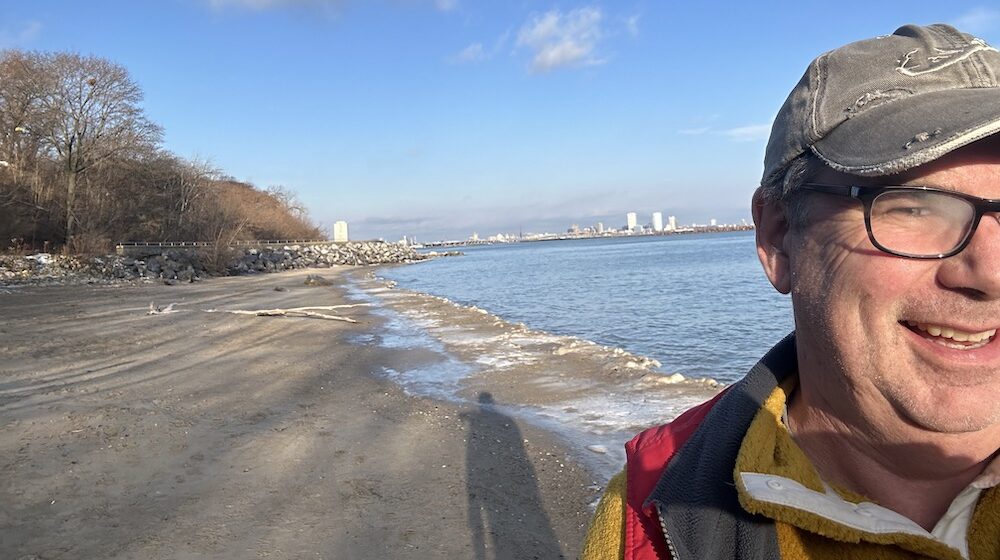
MKE & ORD, Small vs. Big
January 1st, 2023 - By Patrick T. McBriarty
Though frequently referred to as “little Chicago” by folks from Illinois, the “Cream City” (so called for the hue of the local brick) has a distinct culture and identity.
A case in point, Milwaukee water fountains are called “bubblers”. And the local NPR radio series answering listener questions in Chicago called “Curious City” (on WBEZ) in Milwaukee entitled “Bubbler Talk” on WUWM. The origins of this odd term and public radio series offers an interesting dive into Milwauke history.
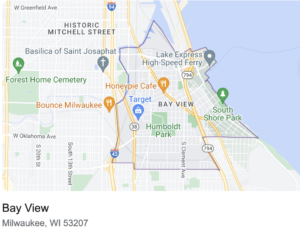 My new life in Milwaukee definitely feels “sleepier”. The pace is more relaxed and the local nightlife, culture, sports, and architecture is also much more laidback. I cannot help but regularly make such comparisons after living in Chicago the past 30-years. However, slower does not mean backward nor less sophisticated. The move to Milwaukee included wanting to try life in a smaller community and not have to work so hard to make a difference. Having signed a lease on an Bay View apartment in October I am finally letting go of a frustration that “nothing is going on here”. Now viewing it as positive, with “nothing going on” life is easier and there’s little “fighting” on what to do or to get somewhere. The constant undercurrent of having to keep up and worry of missing out are practically gone. Life in a smaller community leaves space to honor day-to-day routines and give things the time they should take.
My new life in Milwaukee definitely feels “sleepier”. The pace is more relaxed and the local nightlife, culture, sports, and architecture is also much more laidback. I cannot help but regularly make such comparisons after living in Chicago the past 30-years. However, slower does not mean backward nor less sophisticated. The move to Milwaukee included wanting to try life in a smaller community and not have to work so hard to make a difference. Having signed a lease on an Bay View apartment in October I am finally letting go of a frustration that “nothing is going on here”. Now viewing it as positive, with “nothing going on” life is easier and there’s little “fighting” on what to do or to get somewhere. The constant undercurrent of having to keep up and worry of missing out are practically gone. Life in a smaller community leaves space to honor day-to-day routines and give things the time they should take.
Before moving here, I took Milwaukee’s smaller in size for granted and gave it no further thought. Yet chatting with literary friends on a Milwaukee rooftop last summer attempting to explain the difference in life here versus Chicago, I chalked up Milwaukee as 1/10th the size. A later check put Milwaukee (592K residents) at roughly a 1/5th the size of Chicago (at 2.7 million residents), and metro-Milwaukee’s 1.5 million at 1/6th the size of Chicagoland’s 9.6 million residents. Going deeper I discovered the population density of Chicago (at 12,280 people/sq. mile) was more than twice Milwaukee’s (at 5,836 people/sq. mile) which seemed to reinforce my thesis. Regularly going from one to the other this past year the difference in population and order of magnitude seemed to be at the root cause of the differences in culture, society and the built environment.
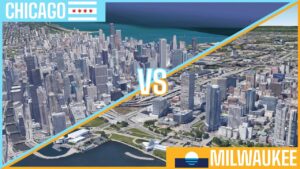 Starting to settle into a more relaxed pace my “normal” compulsion to jam too much into too little space or time now feels a bit frantic and unnecessary. My original frustration that Milwaukee has “nothing going on” was misdirected and more likely due to my lack of local knowledge. Repeated visits to Chicago where local knowledge gave me great comfort I was interestingly left with no regrets driving north each time into “Cheeseland”.
Starting to settle into a more relaxed pace my “normal” compulsion to jam too much into too little space or time now feels a bit frantic and unnecessary. My original frustration that Milwaukee has “nothing going on” was misdirected and more likely due to my lack of local knowledge. Repeated visits to Chicago where local knowledge gave me great comfort I was interestingly left with no regrets driving north each time into “Cheeseland”.
It just takes a bit of time to find the many cool, interesting, and fun things to do in and around Milwaukee. And the beauty is – places, events, and happenings are not all bunched on top of another in time or space. So I am given the gift of time and space and rarely have worry about what to do or where to go next. I can just let things happen.
Another obvious upside to Milwaukee’s “smallness” is the people – who are friendlier and unrushed. They have the time and the ease to stop and talk to take advantage of unexpected meetings allowing them to expand into a pleasant chat to turn a stranger into an acquaintance.
Coming here with the intention of finding a new home various real estate searches on Zillow and driving around looking at places to live presented strong differences between the two cities. First was the rapid variation in tone and tenor from place to place and even block to block in Milwaukee. In other words, the change in the economic feel and use of land from one area to the next in Milwaukee is abrupt by Chicago standards. Going from downtown to neighborhoods, suburbs to rural areas, and easy access to parks, natural spaces, and open land was quick and easy.
The lower density is reflected in both city and residential neighborhoods. These transitions often demarcated by a “natural” urban divider like a highway, overpass, rail track or waterway can  morph dramatically from one side to the other. As an example, in the Milwaukee suburb of Wauwatosa. One of the tonier suburbs, looking at real estate with a sharp eye to the relative “nicety” of homes changed from block to block or even house to house without no clear dividing line. Housing throughout Milwaukee is quite “patchy” and the golden rule in Chicago of price per square foot by neighborhood seems barely a guideline in Milwaukee where prices can vary dramatically from door to door. This is a shock to my Chicago sensibilities where subtle changes in neighborhoods can gradually play out for block upon block sometimes for miles or are at least of abrupt are clearly demarked by a divider of a bridge, overpass, or major street.
morph dramatically from one side to the other. As an example, in the Milwaukee suburb of Wauwatosa. One of the tonier suburbs, looking at real estate with a sharp eye to the relative “nicety” of homes changed from block to block or even house to house without no clear dividing line. Housing throughout Milwaukee is quite “patchy” and the golden rule in Chicago of price per square foot by neighborhood seems barely a guideline in Milwaukee where prices can vary dramatically from door to door. This is a shock to my Chicago sensibilities where subtle changes in neighborhoods can gradually play out for block upon block sometimes for miles or are at least of abrupt are clearly demarked by a divider of a bridge, overpass, or major street.
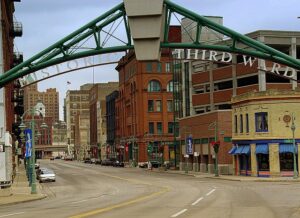 Don’t get me wrong, Milwaukee is a vibrant city. It has and continues to do well at converting former factories and warehouses into interesting multi-story condos and busy commercial spaces, especially along the Milwaukee River. And the downtown’s historic 3rd Ward is a show case for Milwaukee’s success in redeveloping mid-rise industrial and manufacturing buildings into a vibrant residential and commercial neighborhood. I now greatly appreciate my former home on Waveland Avenue. A top-floor, 2-bedroom, 2-bath condo in a brick 6-flat with a 2-car garage while rare in Chicago, simply does not exist in Milwaukee.
Don’t get me wrong, Milwaukee is a vibrant city. It has and continues to do well at converting former factories and warehouses into interesting multi-story condos and busy commercial spaces, especially along the Milwaukee River. And the downtown’s historic 3rd Ward is a show case for Milwaukee’s success in redeveloping mid-rise industrial and manufacturing buildings into a vibrant residential and commercial neighborhood. I now greatly appreciate my former home on Waveland Avenue. A top-floor, 2-bedroom, 2-bath condo in a brick 6-flat with a 2-car garage while rare in Chicago, simply does not exist in Milwaukee.
The lower population and density along with the low cost of land seems to explain the building individual homes and duplexes. However, to my chagrin, Milwaukee lacks the 3, 4 and 6-flats I so loved in Chicago. Milwaukee does love its duplexes which are plentiful. However, they usually lack the character and charm of Chicago’s brick, multi-household flats. My guess is as a small real estate market there has not been enough demand to drive residential building heights above two-
stories. And in turn this prevented construction of Chicago style 3, 4 or 6-flat buildings. Certainly, multi-story residential buildings exist in Milwaukee, but most are cookie-cutter apartment or multi-story elevator buildings. As a result the architecture is more utilitarian, less interesting or homey than in much of Chicago.
Beyond ascetics my real estate search is further complicated by all my tools and toys. So, despite good multi-story condominiums offering great security, a built-in communities, no yard work or lawns to cut their common garage spaces cannot easily accommodate three bikes, a kayak, a Laser sailboat, a work bench and a car. Thankfully, Milwaukee’s smaller market offers a variety of affordable small houses in most any neighborhood I want to live. So, it is likely I will need to purchase a 3-bedroom 2-bath house to get my private garage.
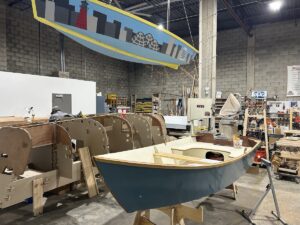 Another huge difference in Milwaukee is traffic, or rather a refreshing lack of traffic. By Chicago standards Milwaukee has no traffic at all. As an example, I was pleasantly surprised many months ago by the roughly 5-minute drive from All Hands Boatworks (AHB) to a fancy lunch downtown. There virtually no mid-day traffic and I whisked from the industrial Menomonee Valley to downtown just over a mile and a half and easily found parking. As a recent Windy City expatriate, this was both remarkable and amazing.
Another huge difference in Milwaukee is traffic, or rather a refreshing lack of traffic. By Chicago standards Milwaukee has no traffic at all. As an example, I was pleasantly surprised many months ago by the roughly 5-minute drive from All Hands Boatworks (AHB) to a fancy lunch downtown. There virtually no mid-day traffic and I whisked from the industrial Menomonee Valley to downtown just over a mile and a half and easily found parking. As a recent Windy City expatriate, this was both remarkable and amazing.
Slowdowns and bumper-to-bumper traffic are rare and usually brief even during Milwaukee’s daily rush “half“-hours. Of course, Milwaukee has its pinch points like I-94 west of downtown. While geographically similar to Chicago’s Eisenhower (I-290) also running west of the city, Milwaukee has nothing like the Ike’s “Hillside strangler” or congestion and bumper-to-bumper traffic any time of the day. Milwaukee’s rare bumper-to-bumper traffic is usually due to an accident or construction which typically clear in a short order. Meanwhile bumper-to-bumper traffic in Chicago is expected at least twice a day during the two-hour (plus?) rush hours.
In Milwaukee most everything is 15-to-20 minutes away – even to travel approximately the same number of miles. By comparison traveling half the distance in Chicago takes at least twice as long or usually more. To say Chicago has six-times more traffic and congestion feels like an underestimate as it was ranked 8th in the nation for worst traffic, while Milwaukee was not even in the top 50.
On the flip side it is easy to live without a car in Chicago and I have several friends who still do. Most Chicago neighborhoods are quite walkable and public transportation is quite good. While in Milwaukee it is neigh impossible to live in without a car. Since moving here I use my car daily and spend much more time driving for work, to run errands or entertainment. Walking around the neighborhood was part of everyday life to run errands or to get food in Chicago. And I frequently went for days and occasionally a week or more without using my car.
These initial observations are just “scratching the surface” as I am sure there are more to come.
 Happy Christmas and Holidays and here’s hoping you all have a healthy and Merry New Year!
Happy Christmas and Holidays and here’s hoping you all have a healthy and Merry New Year!

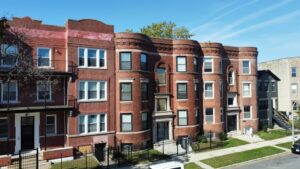
January 2nd, 2023 at 7:14 am
Happy New Year!
January 15th, 2023 at 7:34 am
Good to hear that Milwaukee is treating you well.
Like you, after moving to MI one of the big differences we had to get used to was having to drive everywhere.
Happy New Year
January 15th, 2023 at 9:40 am
Wishing you a great 2023 in your new city.
Really enjoy the perception of Chicago v. Milwaukee.
I seem to become increasingly disoriented, living part of the year in Muskegon, balance (or lack there of) in Orlando. The differences of community fabric, real estate, geography, economic base and importantly culture can be jarring.
Ultimately, we create our environment. You are a creative – doing what you need to do.